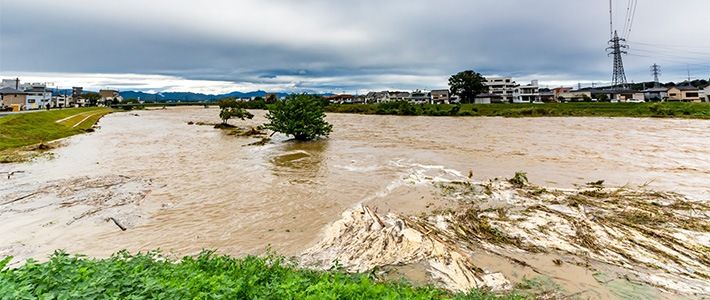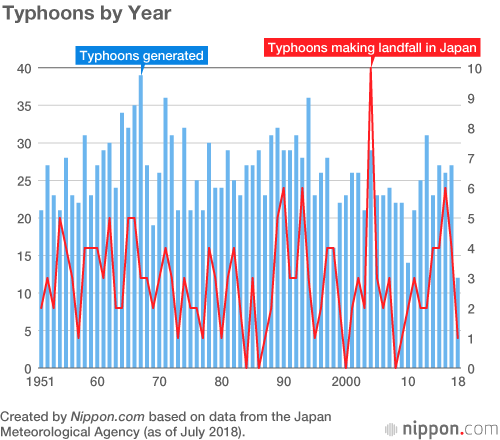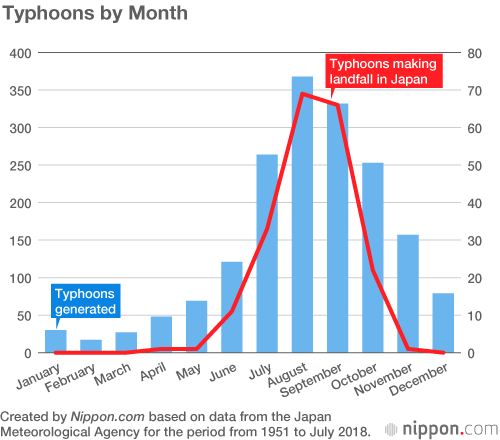
Japan’s Typhoons: Peak Numbers in August, Peak Damage in September
Society- English
- 日本語
- 简体字
- 繁體字
- Français
- Español
- العربية
- Русский
Every summer Japan is struck by typhoons, which at times result in major natural disasters.
The Japanese term taifū (typhoon) is used to describe a low-pressure system that develops over tropical waters in the Pacific Ocean and then heads toward Japan or other parts of East Asia, with maximum sustained surface winds averaging at least 17 meters per second over a period of 10 minutes. Typhoons are carried by higher altitude winds and have the tendency to head north under the influence of the Earth’s rotation. Many of the typhoons that approach the Japanese archipelago are carried by the prevailing westerly winds in a northeastern direction at high speeds.
The number of typhoons per year varies, but the annual average for the period from 1951 to 2017 was approximately 26, of which around 3 hit Japan.

Typhoons’ development is fueled by the energy released when water vapor rising from the warm ocean surface condenses into water droplets within clouds. This is why most of the typhoons that are generated and make landfall occur from July to October, when ocean temperatures are higher.

List of Typhoons Causing Major Damage in Japan
| Date typhoon hit Japan | Typhoon name | Number of dead or missing | Number of houses destroyed |
|---|---|---|---|
| September 21, 1934 | Typhoon Muroto | 3,036 | 92,740 |
| September 17, 1945 | Typhoon Makurazaki | 3,756 | 89,839 |
| September 15, 1947 | Typhoon Kathleen | 1,930 | 9,298 |
| September 26, 1954 | Typhoon Tōyamaru | 1,761 | 207,542 |
| September 26, 1958 | Typhoon Kanogawa (Ida) | 1,269 | 16,743 |
| September 26, 1959 | Typhoon Isewan | 5,098 | 833,965 |
| September 19, 1990 | Typhoon Flo | 40 | 16,541 |
| September 27, 1991 | Typhoon Mireille | 62 | 170,447 |
| September 3, 1993 | Typhoon Yancy | 48 | 1,784 |
| September 7, 2004 | Typhoon Songda | 46 | 64,999 |
| October 20, 2004 | Typhoon Tokage | 98 | 21,350 |
| September 3, 2011 | Typhoon (Tropical Storm) Talas | 98 | 4,008 |
| October 16, 2013 | Typhoon Wipha | 43 | 1,094 |
The table above was created by Nippon.com based on data on the Japan Meteorological Agency’s website. Shaded areas are typhoons that struck Japan in September. The data was published by the JMA to show how figures for dead and missing were more than 1,000 persons for major typhoons that struck during the Shōwa era (1926–1989), whereas fatalities were less than 100 persons during the Heisei era (1989–present).
(Translated from Japanese. Banner photo: © Pixta.)